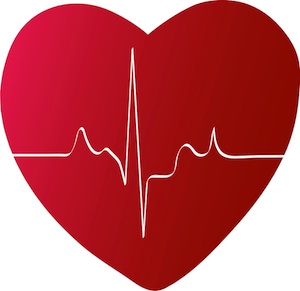
The pacemaker’s batteries supply the electrical energy that acts like your heart’s natural pacemaker. An implanted electronic pacemaker is used in some cases of slow heart rate.This is a device that applies electric impulses or, if needed, a shock to restore a normal heartbeat. Ventricular tachycardia and ventricular fibrillation can be treated by an implantable cardioverter defibrillator (ICD).Other treatments include percutaneous (catheter) interventions, implantable devices, and surgery (for severe cases). An implantable loop recorder helps doctors find out why a person is having heart palpitations or fainting spells and can be used for up to 2 years.Īnti-arrhythmic medicines, including digitalis, beta-blockers, and calcium channel blockers, are often the first approach taken for treating arrhythmia.

Coronary angiography is performed in the cardiac catheterization laboratory and gives doctors an x-ray “movie” of heart action and blood flow.The test is noninvasive, which means that doctors will not use needles or catheters. A tilt-table exam is a way to evaluate your heart’s rhythm in cases of fainting.Electrophysiology studies (EPS) are usually done in a cardiac catheterization laboratory.One such device is the size of a beeper, and another is worn like a wristwatch. The devices used for this type of test are smaller than a Holter monitor. Event monitoring records problems that may not be found within a 24-hour period.Holter monitoring gets a non-stop reading of your heart rate and rhythm over a 24-hour period (or longer).This test helps doctors analyze the electrical currents of your heart. A standard electrocardiogram (ECG or EKG).The following techniques are used to diagnose arrhythmias. You may feel chest discomfort, weak, short of breath, faint, sweaty, or dizzy.You may feel a strong pulse in your neck, or a fluttering, racing heartbeat in your chest.You may feel tired, short of breath, dizzy, or faint.Heart palpitations do not always mean that you have an arrhythmia. Some arrhythmias do not produce any symptoms. Symptoms also depend on how severe the arrhythmia is, how often it happens, and how long it lasts. Whether you have symptoms and what those symptoms feel like depend on the health of your heart and the type of arrhythmia you have. Also, stress, caffeine, smoking, alcohol, and some over-the-counter cough and cold medicines can affect the pattern of your heartbeat. Some people are born with arrhythmias, meaning the condition is congenital. Some medical conditions, including certain types of heart disease, high blood pressure, and hemochromatosis (iron build-up in the body), may be factors. Heart block happens when the SA node’s electrical signal cannot travel to the heart’s lower chambers (the ventricles). Fibrillation, the most serious form of arrhythmia, is fast, uncoordinated beats, which are contractions of individual heart-muscle fibers. Tachycardia is a very fast heart rate, meaning the heart beats faster than 100 beats per minute. A very slow heart rate, called bradycardia, means the heart rate is less than 60 beats per minute. Supraventricular arrhythmias happen in the structures above the ventricles, mainly the atria, the heart’s two upper chambers.Īrrhythmias are further defined by the speed of the heartbeats. Ventricular arrhythmias happen in the heart’s two lower chambers, the ventricles. Categories of ArrhythmiaĪrrhythmias can be divided into two categories: ventricular and supraventricular. But about 4 million Americans have recurrent arrhythmias, and these people should be under the care of a doctor. Almost everyone’s heart skips or flutters at one time or another, and these mild, one-time palpitations are harmless. The SA node is a group of cells located at the top of your heart’s upper right chamber (the right atrium).Īny irregularity in your heart’s natural rhythm is called an arrhythmia. These heartbeats are triggered by electrical impulses that begin in your heart’s natural pacemaker, called the sinoatrial node (SA node). Even while you are sitting still, your heart beats (expands and contracts) 60 to 80 times each minute.


Your heart pumps nearly 5 quarts of blood through your body every minute.


 0 kommentar(er)
0 kommentar(er)
